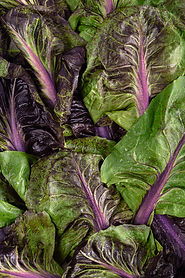
Paleo
The Paleo Approach: Eating the Way Your Body Was Designed
Essentially, the gist of the paleo diet is eating as our ancestors once did — the original hunter-gatherers. They lived off of what they could hunt or pick: meat, fish, nuts, berries, regional vegetables, leafy greens, and seeds. Sorry — no candy, pizza, or sugary cereal allowed!
For 99% of human history, people thrived on animal protein, healthy fats, and vegetable-based carbohydrates. Our bodies functioned beautifully, in part because the gut flora (the beneficial bacteria in our intestines) was balanced and adapted to this nutrient-rich way of eating.
Where Things Changed
Around 10,000 years ago, the Agricultural Revolution introduced farming as the main food source. With it came grains — a radical shift in the human diet. While farming increased food quantity, it didn’t always increase nutritional quality.
Grains are relatively “new” to our digestive systems, and many people today are not well-adapted to break them down. Grains contain anti-nutrients that protect the grain’s survival but can irritate the human gut, interfere with nutrient absorption, and trigger inflammation.
It’s no coincidence that as grains and processed foods spread worldwide, so did many “diseases of civilization” such as:
-
Autoimmune conditions
-
Cardiovascular disease
-
Type 2 diabetes
-
Obesity and metabolic syndrome
What Paleo Looks Like

Grass-fed or pasture-raised meats
Wild-caught fish and seafood
Fresh vegetables of all colors
Fruits in moderation
Nuts, seeds, and healthy oils (olive, avocado, coconut)

Grains (wheat, barley, rice, corn, etc.)
Dairy products
Legumes (beans, lentils, peanuts, soy)
Refined sugar and processed foods
Industrial seed oils (canola, soybean, sunflower)
Why Go Paleo?
Eliminating grains, dairy, legumes, and processed foods helps reduce hidden stressors in the body. Patients often notice improvements in:
-
Digestive discomfort (bloating, constipation, IBS-like symptoms)
-
Autoimmune flare-ups (joint pain, thyroid imbalance, skin conditions)
-
Chronic inflammation, arthritis, or fibromyalgia
-
Weight gain or stubborn belly fat
-
Brain fog, mood swings, and poor concentration
-
Hormonal imbalances and adrenal fatigue
-
Fatigue and unstable blood sugar levels
The Healing Benefits
When you return to a natural way of eating:
-
Inflammation decreases → joints, muscles, and tissues function better
-
Blood sugar stabilizes → energy crashes and sugar cravings fade
-
Gut health improves → removing irritants allows the intestinal lining to repair
-
Hormones rebalance → nutrient-dense foods fuel your endocrine system
-
Brain function sharpens → the gut–brain axis works more smoothly
Finding Balance
If you’re imagining paleo as eating a T-bone steak every night, look a little further. Paleo is not about excess — it’s about balance and moderation. At its core, it’s eating whole, nourishing, unprocessed foods in a way that supports the body’s natural design.
At Chiropractic Care Center, we see paleo nutrition as more than just a “diet.” It’s a way to remove hidden interferences, restore gut health, and support the nervous system so your body can do what it was designed to do: heal itself.
